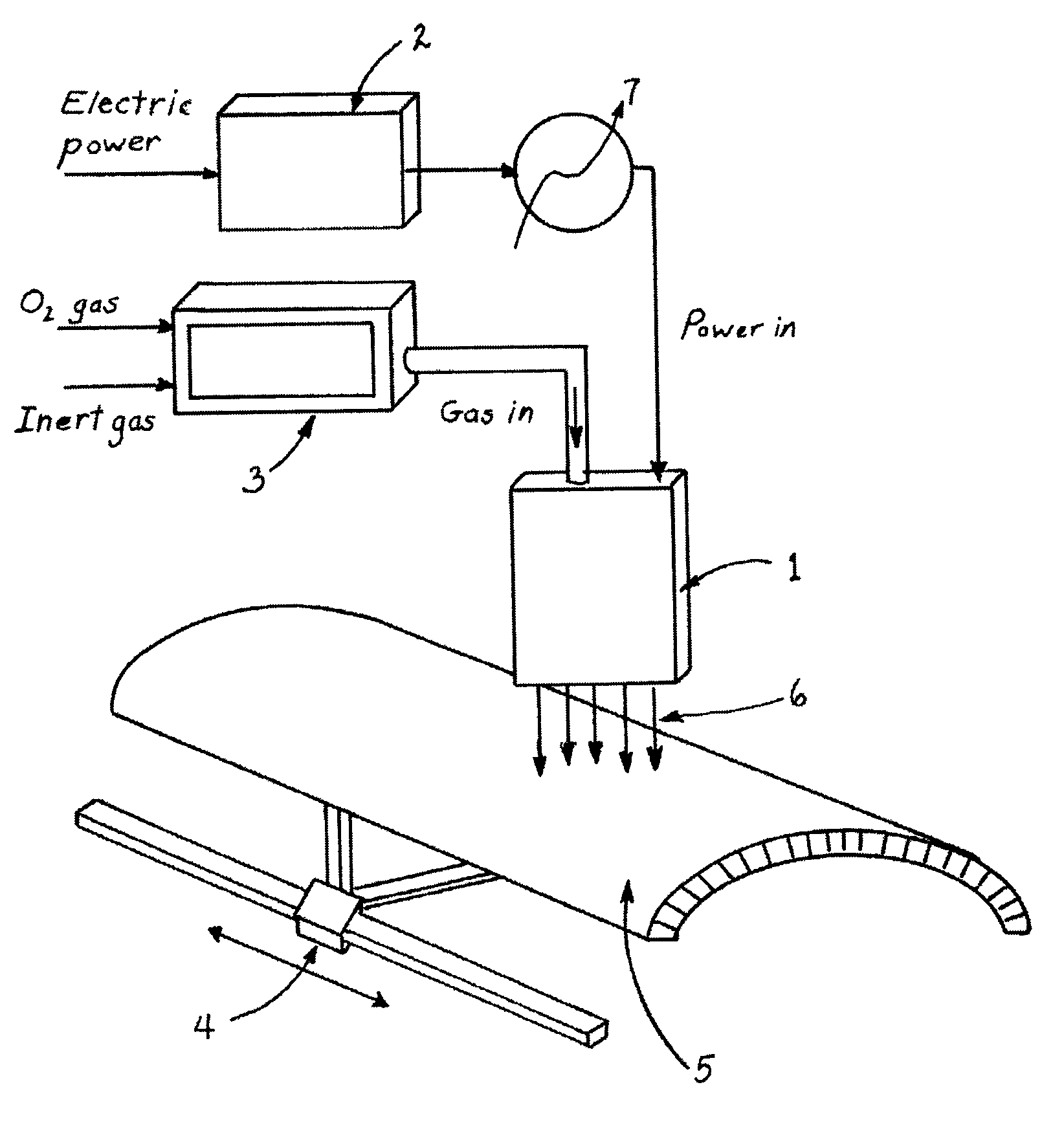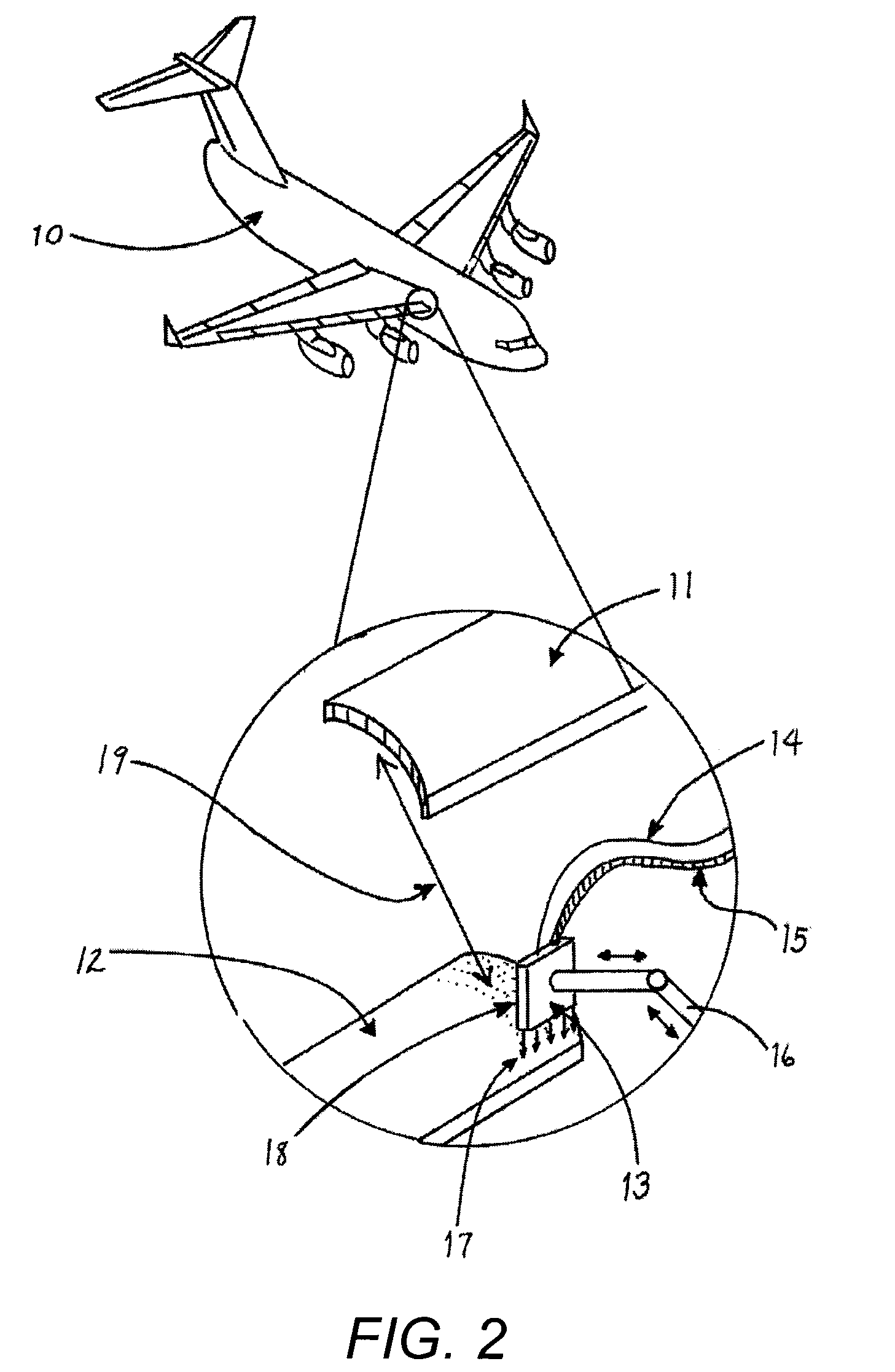Plasma surface treatment of composites for bonding
- Summary
- Abstract
- Description
- Claims
- Application Information
AI Technical Summary
Benefits of technology
Problems solved by technology
Method used
Image
Examples
example 1
[0031]Carbon-fiber-reinforced polyetheretherketone was obtained in order to demonstrate the improved method of bonding composites together. The PEEK composite included 0° laminates, containing 16 plies that were fabricated from unidirectional prepreg using IM7 or AS4 carbon fibers. The PEEK panels were cut into 1.0″ by 6.0″ strips. After plasma surface treatment, an epoxy film adhesive, 3M Scotch-Weld™ AF-563M, was used to bond the composites together. The film adhesive was 0.06 wt. and 10 mils thick.
[0032]The atmospheric pressure plasma device used to treat the PEEK contained a control unit that integrated together a radio frequency power supply operating at 13.56 MHz, a matching network, and a gas manifold with mass flow controllers that provided a mixture of 1.5 vol. % oxygen in helium at a flow rate of 30 L / min. The gas flow was directed through a cylindrical plasma device that was about 1.0 inch in diameter by 6.0 inches long. The device was configured with a gas inlet and a ga...
example 2
[0037]Mechanical strength tests were performed on adhesively bonded strips of carbon-fiber-reinforced PEEK composites following the ASTM D1002 single-lap shear method and the ASTM D3165 double-notch lap shear method. For the ASTM D1002 test, PEEK panels, 6.0″ by 7.0″ were exposed to the plasma at 2.0 mm distance, using 100 W RF power, a mixture of 1.5 vol. % oxygen in helium at a flow rate of 30 L / min, and a treatment time of 30 s per inch2. After treatment, 3M Scotch-Weld™ AF-563 film adhesive was applied to the end of a panel to yield a 0.6 inch overlap between the adherends. The adhesive was cured following the same procedure described in Example 1 above.
[0038]After curing, the 6.0″ by 7.0″ panels were cut into 1″ wide strips and then pulled apart using an Instron machine that recorded the force required to shear the bond. It was found that the samples treated with the atmospheric pressure oxygen and helium plasma for 30 s / in2 exhibited lap shear strengths of 6300±100 psi. This v...
PUM
| Property | Measurement | Unit |
|---|---|---|
| Power | aaaaa | aaaaa |
| Speed | aaaaa | aaaaa |
| Frequency | aaaaa | aaaaa |
Abstract
Description
Claims
Application Information
 Login to View More
Login to View More - R&D
- Intellectual Property
- Life Sciences
- Materials
- Tech Scout
- Unparalleled Data Quality
- Higher Quality Content
- 60% Fewer Hallucinations
Browse by: Latest US Patents, China's latest patents, Technical Efficacy Thesaurus, Application Domain, Technology Topic, Popular Technical Reports.
© 2025 PatSnap. All rights reserved.Legal|Privacy policy|Modern Slavery Act Transparency Statement|Sitemap|About US| Contact US: help@patsnap.com



